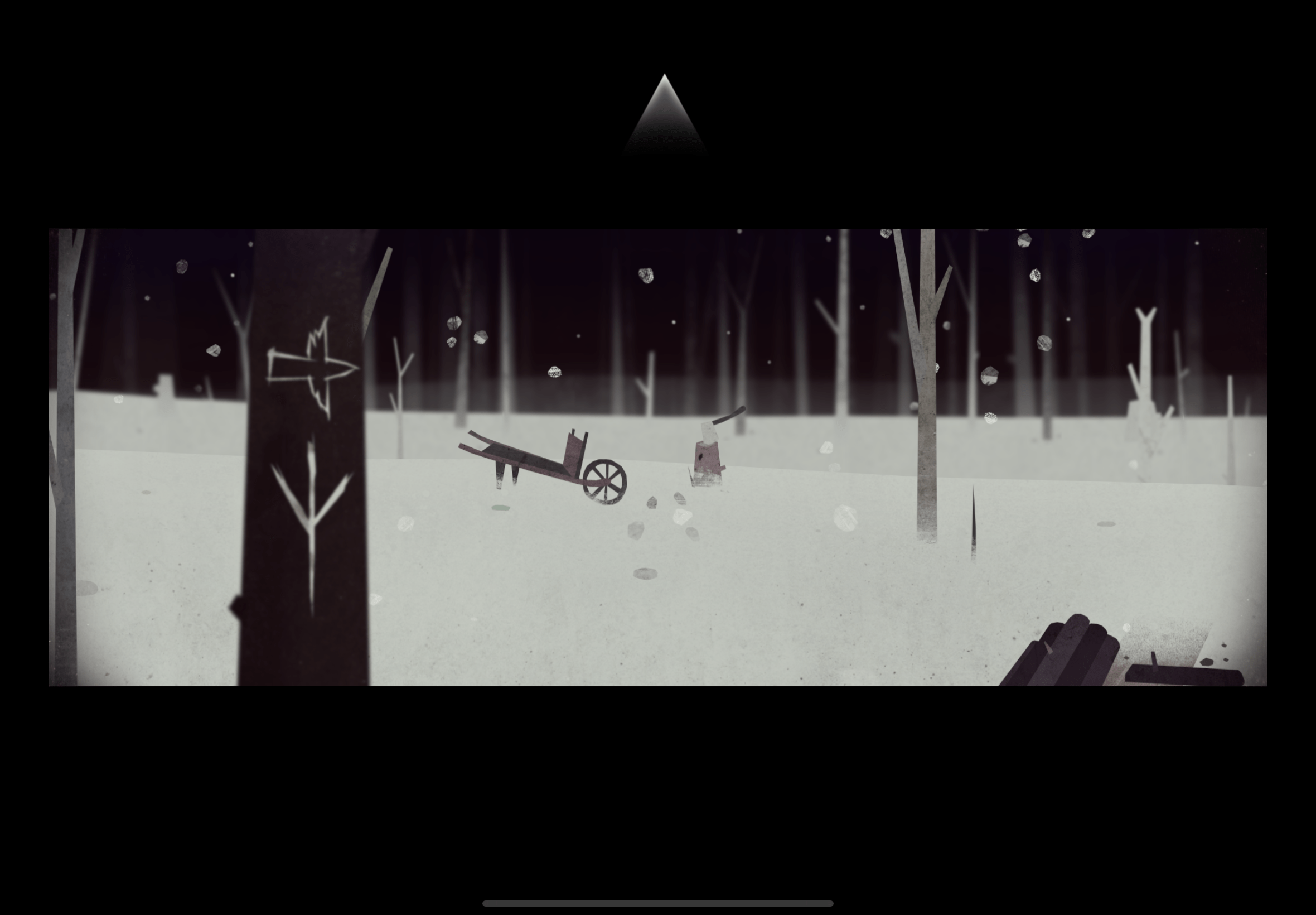 Name of Game: Year Walk
Name of Game: Year Walk
Creator: Simogo
Platform: iOS (iPad)
Target Audience: Casual solo game players
Formal Elements: The player plays against the game, where the objective is to solve puzzles to uncover the mystery of the story. The main rule is that the player can only move forward, side-to-side, and backward, and moves between puzzles. The boundary of the app is the world of the story, though it can be broken by a player looking at solutions to puzzles. The resources in the game are the objects/knowledge required to complete the puzzles. The outcome of the game is the solution to the mystery.
Types of Fun: Sensation (imagery and mood created in the game), Narrative (discovering the story through solving puzzles), and Discovery (exploring the world and interacting with the puzzles).
Moments of Particular Fail: I found the game to be quite challenging. After reaching the owls, I was completely stuck and spent a long time searching the map, because I didn’t realize that 1) this scenario was a puzzle, and 2) other parts of the map contained a solution to this puzzle. Eventually, I had to look at an online walkthrough to solve the puzzle.
Things I would change: I would add a minimap to show where key places are in the map. I spent a lot of time navigating through the map looking for locations, and I always felt locationally lost in the game world, even when I knew where I was supposed to be going.
How a narrative is woven into the mystery: The narrative uses a mix of cutscenes, puzzles, setting, and interaction in order to build the story. There is a theme around “Year Walking”, tied to the protagonist’s lover. We don’t know why theprotagonist is doing the Year Walk, or what the clues imply at first, but the clues build onto the mystery. Over time, we see that the story has elements of horror: blood, ghosts of babies, haunted characters, and spooky inscriptions build the mood. Overall, the story is mostly communicated as an embedded narrative and evokes symbols that the player already has in one’s mind (such as ghost stories, mythical creatures, and murder scenes, rather than telling a very clear story itself.
The simple mechanics (moving between scenes and solving puzzles) make the player feel a little helpless amidst the mystery, that they are discovering existing clues but they don’t have a lot of agency in the experience. The first box which cannot be opened creates a mood of mystery, making the player wonder when they will be able to open the box. The box’s mystery passcode parallels the mystery of the story, leading the player to wonder if the secret to the story is hidden inside the box.


